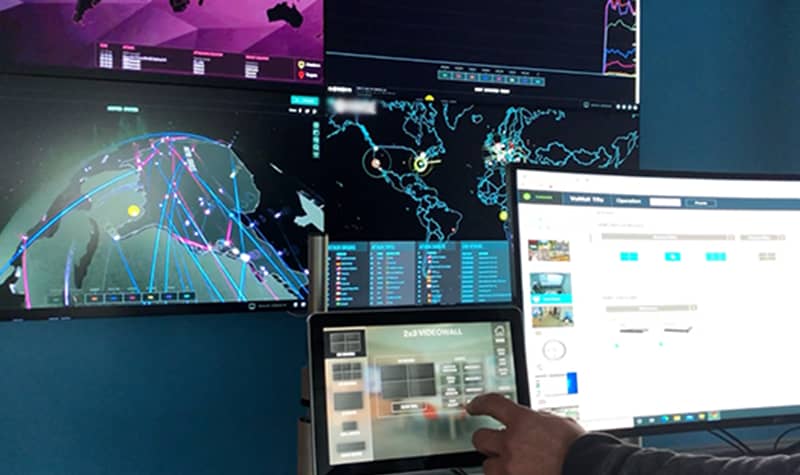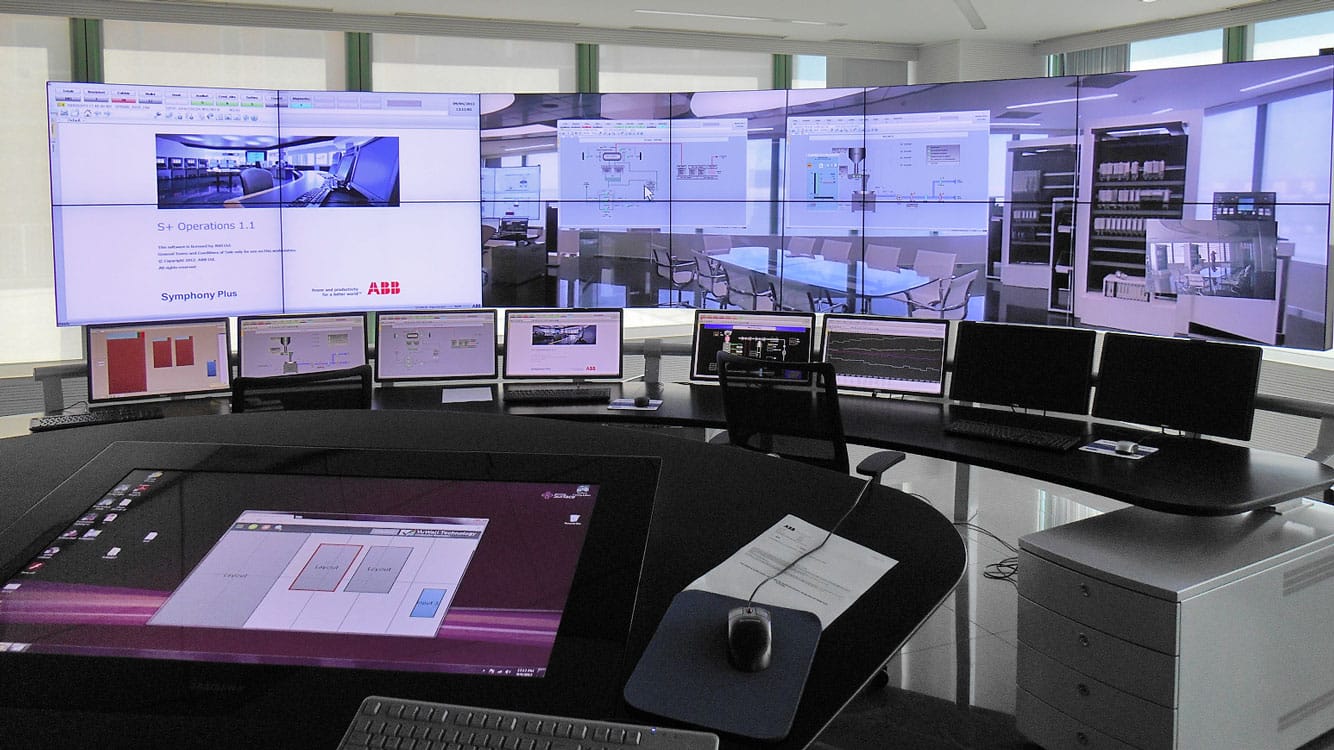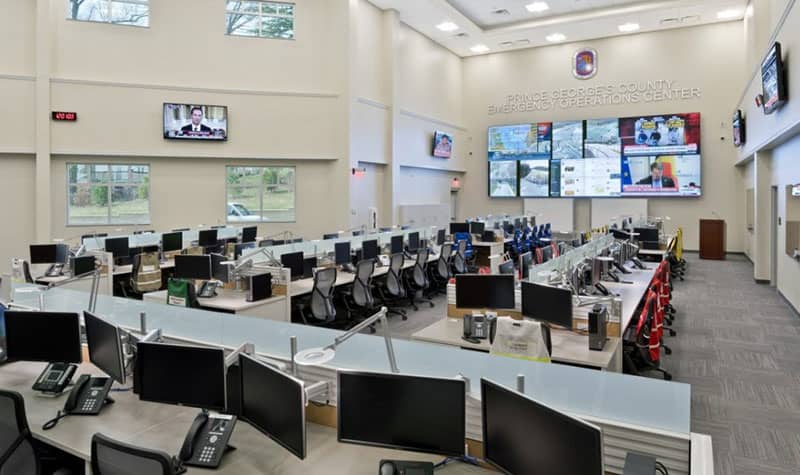
Selecting the Right Visualization Technology for Emergency Operations Centres
Emergency Operations Centres (EOC) are where vital decisions are made. Today, more than ever, it is essential that these centres are equipped with the most efficient, reliable, and intuitive technology to gather and interpret data, but also to plan and implement the best emergency responses in high-risk situations. With so much at stake, it is during the planning and design stages of these centres that selecting the right technology is most critical.
Unlike traditional control room environments, Emergency Operations Centres are characterized by noise, bustle, and tension, with staff working intensively to respond to complex and stressful situations. It is a fast-paced environment, where providing up-to-date information to all stakeholders is crucial.
EOCs usually consist of multiple departments that work together. For example, Europe 112, emergency services, and others. Not only is each team responsible for their specific tasks that are reflected on the central video wall, they must also collaborate and assess the entire situation as a group. Each team then extracts the information they need to respond accordingly. EOCs typically use a smaller video wall than those in control rooms, and commonly have secondary displays, likely LCD panels, that are installed throughout the facility.
The video wall is the central and most critical visualization element in an EOC, while the secondary screens located throughout the facility display content of specific interest to the nearby teams. The EOC is often complemented by additional workspaces such as meeting rooms, crisis rooms, conference rooms, and offices. These are used for conducting strategic meetings for planning and assessing protocols and processes. Often times, the teams in those rooms need to visualize content from the main video wall or send content from the rooms to the main video wall.
When selecting the right technology and system architecture for EOCs, it is important to understand all the requirements for such a variety of visualization needs in multiple locations and for various use cases. At VuWall, we work closely with our partners and customers to deliver to the architectural schematics that illustrate the EOC operations to meet all requirements. Our goal is to help guide our clients (the integrators) and end users, to understand the proposed workflow and ensure that it addresses their needs in the most efficient way.

The Importance of Interoperability
As I’ve already mentioned, Emergency Operations Centres often have multiple teams that are focused on solving specific tasks, utilizing their own sources of information and work tools. Therefore, it is important for these teams to be able to instantly share information with the other teams, and share the information sources with the main video wall for collaborative viewing. This experience needs to be easy and seamless for the staff, and the only way to ensure that is to deploy interoperable technology that can easily integrate with the various tools used in different areas of the facility. This is where the need for effective video wall processing and collaboration technology comes into play, enabling users to easily view and interact with audiovisual sources and collaborate between different work areas. Whether working with the primary video wall, a secondary display, a desktop, or a display in a meeting room, the technology behind the scenes must be able to seamlessly handle (or route) sources and data from any source to any display throughout the EOC.
Manufacturers are making huge investments in developing unified visualization solutions to make their platforms interoperable and as intuitive as possible. Their objective is to provide users tools that are easy to use, quick to learn, AND are also extremely flexible and efficient. Click here to learn more about unified visualization.
EOCs also need a robust solution to distribute source signals across all the displays in the facility with very low latency. More and more organizations are turning to next-generation AV-over-IP solutions to facilitate signal distribution to enable effective collaboration.
VuWall has been focused on developing interoperable AV-over-IP solutions for that exact reason – to facilitate the deployment and usage of visualization systems, for the most effective distribution of visual content from any source to any display.

The Visualization Experience
When selecting a display, visual acuity is the key consideration. This is what will allow operators and decision-makers to see what they need to see, where and when they need to see it, and respond efficiently in a timely manner. It comes down to a simple equation: you have to consider the size of the display, the distance at which the information is going to be viewed, and the type of content or source that is going to be displayed.
In other words, operators must be able to properly see the big picture AND also be able to clearly read the content and interpret any symbols or alerts from their physical location in the EOC. A resolution of 1080p may be adequate in many control rooms and Emergency Operations Centres, but there are applications where 4K (8K in the near future) is already necessary to avoid losing the ability to see important details that are displayed on a large video wall.
Consider, for example, a government intelligence centre that assesses a target area and observes information from high-resolution cameras or maps. These would include visual details that are crucial for decision-making. The size, distance, resolution and ergonomics of the video wall are important factors to consider so that operators are able to interpret situations accurately and respond appropriately.

The Mission Matters Most
End users in EOCs must have high-quality tools that enable them to make well-informed decisions, especially in emergency situations. They must trust the technology: everything from the displays, the video wall processing, the collaboration tools, and of course the signal management.
For those looking to build a highly reliable and high-quality Emergency Operations Centre, working with a trusted integrator with proven experience in such environments is highly recommended. There is no one-size-fits-all solution that is suitable for all EOCs or control rooms. The right technology and project design can vary considerably depending on the mission and the user’s workflow. The focus should always be to find the best possible technology that will allow operators to focus on their mission and not worry about the technology.

